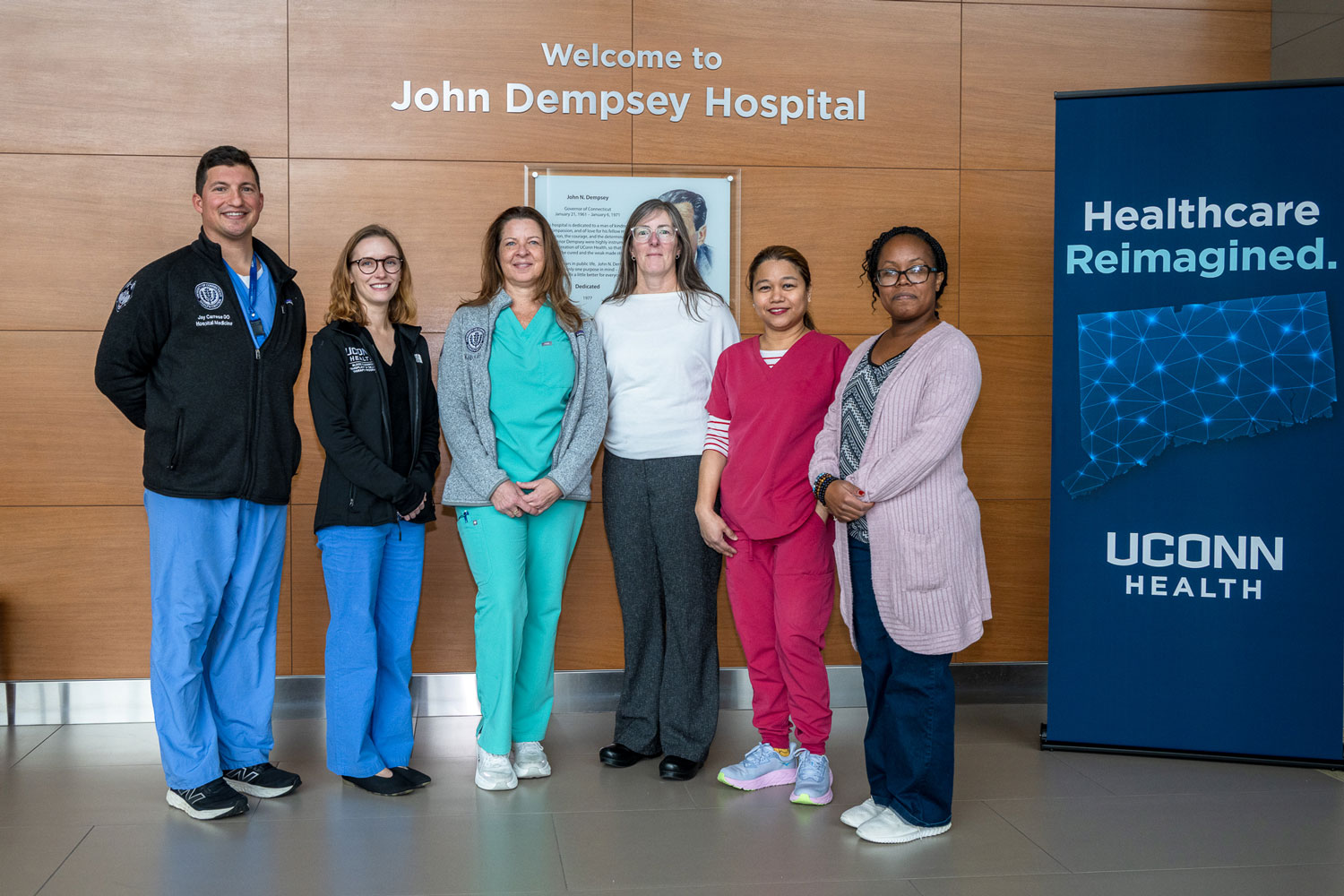
Newborn infants can sleep as much as 18 hours a day. But contrary to popular belief, babies aren’t just blissfully dozing in between feedings.
UConn psychobiologist Inge-Marie Eigsti, in collaboration with a team of scientists based at Columbia University, has found that infants are constantly processing external information, and that babies just hours old are capable of learning even while they sleep.
Since newborn infants spend a predominant amount of their time sleeping, finding evidence that they are capable of learning while asleep may help scientists better understand how babies adjust so quickly to their postnatal environment.
Eigsti, an assistant professor of psychology in the College of Liberal Arts and Sciences who has a special interest in autism, says the non-invasive tests used in the research may also be a useful tool for the early identification of developmental disorders such as autism and dyslexia.
The research team’s findings recently appeared in the Proceedings of the National Academy of Sciences (PNAS). In order to gauge the infants’ ability to learn, the researchers repeatedly sounded a tone that was followed by a gentle puff of air to the sleeping infant’s eyelids. The scientists discovered that 24 out of the 26 infants in the experimental group, after about 20 minutes, were able to associate the tone with the puff, and react accordingly by squeezing their eyelids tighter together. After a while, when only the tone was played, the sleeping infants still squeezed their eyes in anticipation of the puff.
Blinking your eye in defense of a puff of air is a reflex that we don’t think about, Eigsti says. Blinking your eye in anticipation of a puff of air is another matter entirely. It is a learned response.
The infants were videotaped, and a small cap of electrodes on their head recorded bioelectrical activity from their face and scalp. The results further showed that certain brainwaves of infants in the experimental group changed during the testing, reflecting the likelihood of memory updating. Remarkably, Eigsti says, the infants appeared to be learning from past experiences as they slept.
By contrast, a control group of sleeping infants was tested with random tones and puffs of air. While participants in the experimental group averaged a four-fold increase in conditioned eye movement by the end of the testing, the control group showed no change in their probability of eye movement.
“The fact that [infants in the experimental group] are learning this association between the tone and the puff and that they can do it during sleep seems totally incredible,” Eigsti says. “I was amazed at how robust the findings were.”
Eigsti says that one reason for the research team’s interest in eye conditioning responses in infants was research by Professor Lonnie L. Sears of Indiana University, who conducted similar tests on adults with autism and obtained provocative results. The adults in Sears’ 1992 study, who were awake during testing, quickly learned there was a puff of air coming after a beep. But they blinked at exactly the wrong time. They would hear the beep, close their eyes and then open their eyes wide just when the puff of air was released. “There was a very maladaptive circuit that was surprising,” Eigsti said.
Eyelid conditioning reflects the functional capabilities of a portion of the brain known as the cerebellum. Eigsti says the eyelid conditioning test her research team used may be helpful as an early indicator of developmental disorders such as autism, dyslexia, attention deficit disorder, and schizophrenia, all of which are characterized by abnormalities in cerebellum development.
“There is some thought that if we’re worried about a child’s neural integrity, this might be a useful tool that will give us a quick glimpse into whether there are any differences in brain functioning when the child is a newborn,” Eigsti says.
Leading the research team was noted developmental psychobiologist William Fifer of Columbia University. Eigsti did her post-doctoral work with Fifer at Columbia and joined the team in 2001. She remained closely involved in the research after joining the UConn faculty in 2004. With financial support from the National Institutes of Health and the Sackler Institute of Developmental Psychobiology at Columbia, the group has spent much of the past decade preparing for and testing the capacity of infants to learn during sleep. All of the infants involved in the study were one to two days old, and they all slept through the entire procedure, Eigsti said. The newborns were tested at Columbia University Medical Center, with their parents’ permission.
Other members of the research team included Joseph Isler and Jillian Grose-Fifer of Columbia University; Dana Byrd of the University of Florida; Peter Balsam of Barnard; and Michelle Kaku and Amanda Tarullo, research assistants at Columbia.


